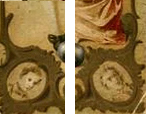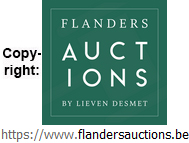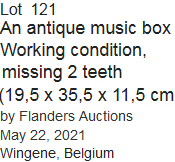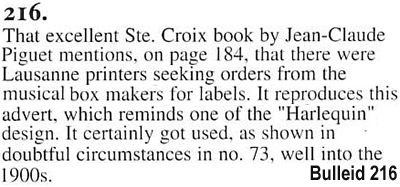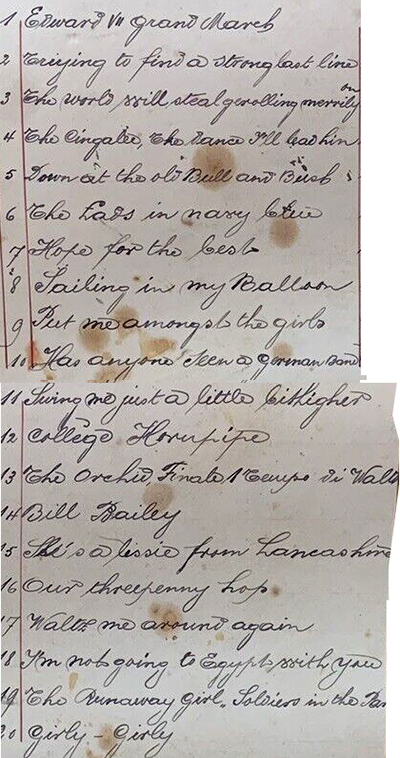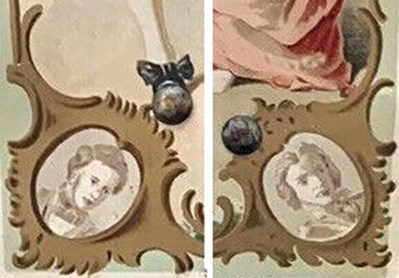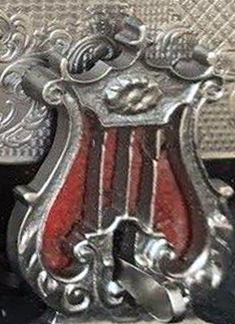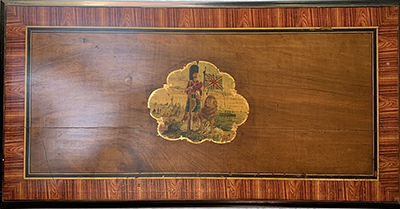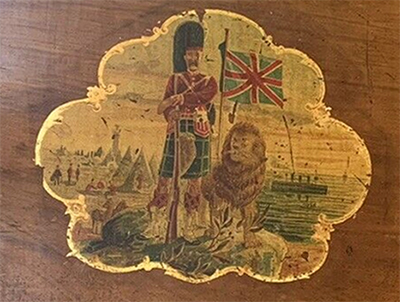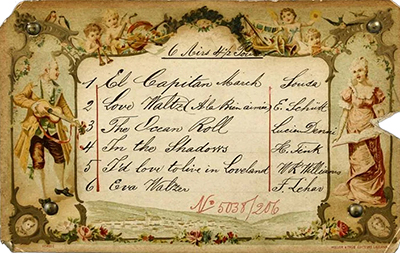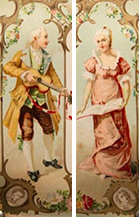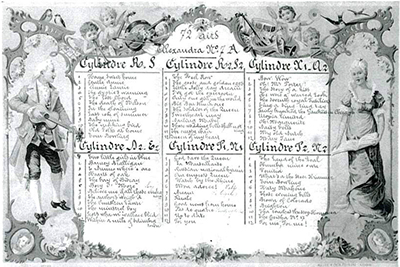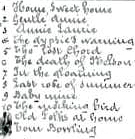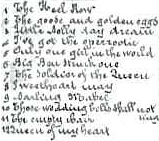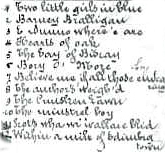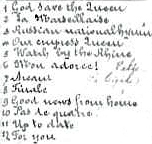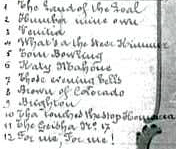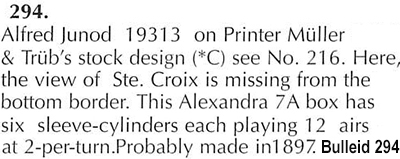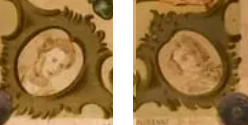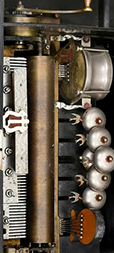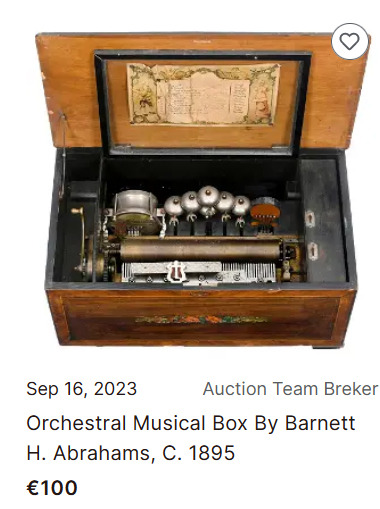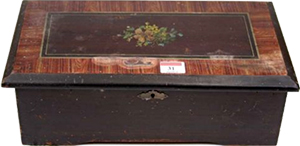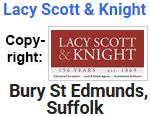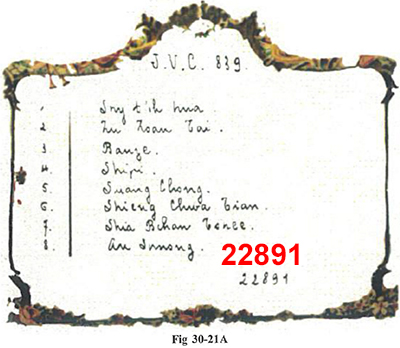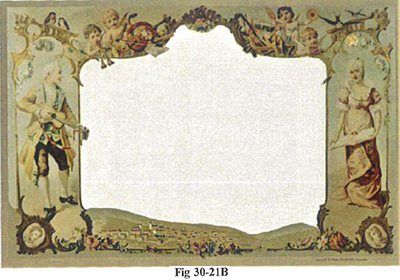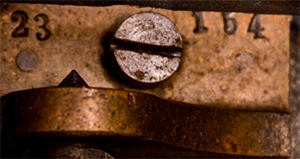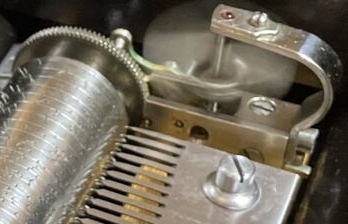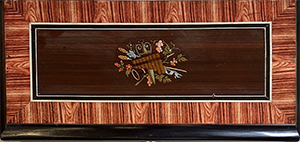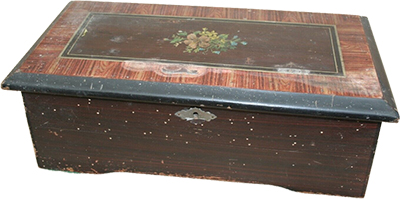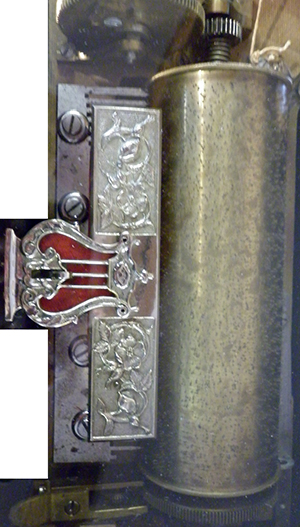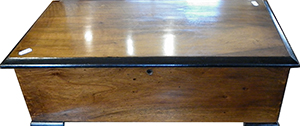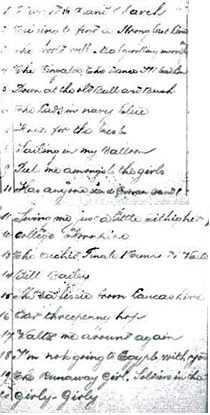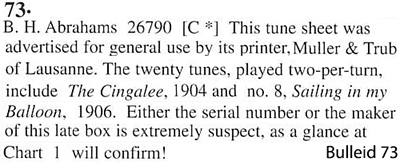Chapter 15 The left and right part dominating: left white haired violonist left, white haired female with sheet music on the right Die linke und rechte Seite dominieren: links weißhaariger Geigenspieler, rechts eine weißhaarige Damen mit Noten in der Hand Drucker: Müller-Trüb Hersteller der Spieldosen: Henry Barnett Abrahams, Junod, Cuendet und andere (?)
[2] tunesheet by Müller&Trüb a Lausanne, [3] 20 airs, 1st: Edward VII march (1902), [6] 3rd: I´m not going to Egypt nicht you, N° 5038 Drucker Mueller Trueb Editeurs Lausanne EVA 1911, 6 airs, N° 5786 Mandoline Harp, Andrew Jones Auctions, 8 airs, N° 19313 Alfred Junod, 72 airs, N° 22673 (indistinct, maybe false), N° 22891 J. V. C. [John Cuendet?], N° 23154 Swiss, Donley Auction Services, 24 airs, N° 23607 Müller & Trüb Editeurs, Lausanne, 8 airs, N° 26790 Harpe Zither, 20 airs, [1] No serial: 8 airs, 1st: Faust Valse
[2] tunesheet
[3] 20 airs, 1st: Edward VII march (1902), [3] 20 airs, 1st: Edward VII march (1902)
Eduard VII., geb. 9. November 1841, Buckingham Palace, London, war vom 22. Januar 1901 bis zu seinem Tod (am 6. Mai 1910, Buckingham Palace, London) König des Vereinigten Königreichs Großbritannien und Irland und Kaiser von Indien. Die Kröungsfeierlichkeiten fanden am 9. August 1902 statt. Er war der erste britische Herrscher aus dem Haus Sachsen-Coburg und Gotha und ältester Sohn Königin Victorias. (Wikipedia)
20 airs on a 40 tooth comb fitted with a resonator. A resonator is a device or system that exhibits resonance or resonant behavior. That is, it naturally oscillates with greater amplitude at some frequencies, called resonant frequencies, than at other frequencies. (Wikipedia)
[4] 24 teeth only
No 5038: Drucker Mueller Trueb Editeurs Lausanne EVA 1911, 6 airs
No 5786: Mandoline Harp, Andrew Jones Auctions, 8 airs
No 19313: Alfred Junod, 72 airs
No 20207, 1st: Shop girl, 12 airs
No 22673 (indistinct, nmaybe false)
No 22891: J. V. C. [perhaps John Cuendet?]
No 23154: Swiss, Donley Auction Services, 24 airs
No 23607: Müller & Trüb Editeurs, Lausanne, 8 airs
©ebay 2022 January 30 No 23653: 8 airs
No 23750: Harpe Zither, 20 airs
No 26790: Harpe Zither, 20 airs
|

